Nubuck leather, a term you might have come across in high-end fashion stores or while browsing for quality furniture, stands out for its unique texture and durability. But what exactly is it?
In this article we’ll talk about this luxurious material, exploring its characteristics, production process, and uses.
Definition and Origin
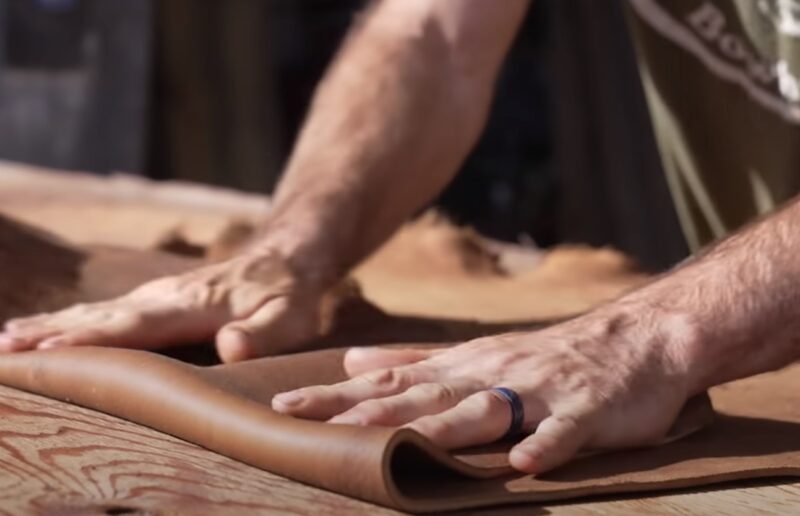
Nubuck is a type of leather known for its softness and velvety surface, often confused with suede due to its similar texture. It’s crafted from the top grain of the hide, primarily from cattle, which is the outermost layer of the animal’s skin.
This layer is the most durable and high-quality part of the hide. The unique aspect of nubuck comes from its treatment; the outer layer of the hide is sanded or buffed to give it a slight nap of protein fibers.
This process not only imparts the material with its characteristic texture but also maintains the inherent strength of the top grain, unlike suede which is made from the softer underside of the hide.
The result is a material that balances luxury with resilience, making it a popular choice for a variety of high-end products.
Production Process
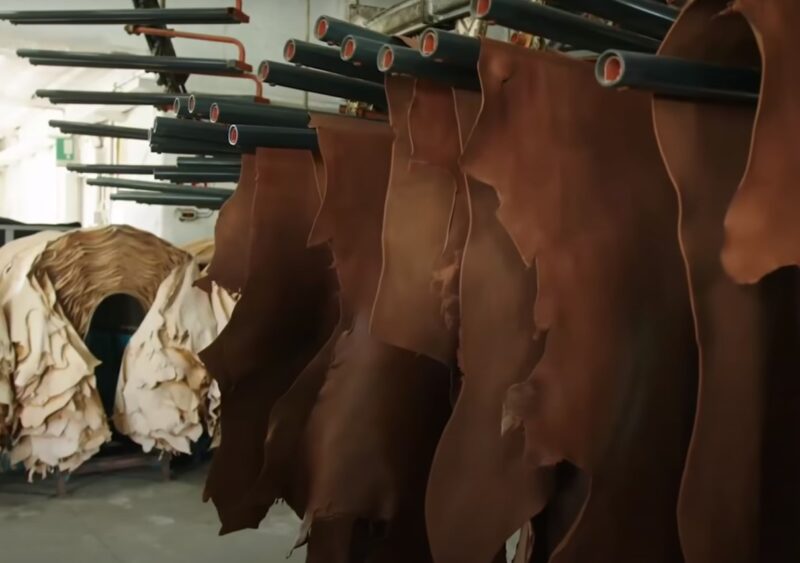
The process of making nubuck leather involves several stages:
Stage 1 – Tanning
The hide is first tanned, a process that is crucial for converting raw hides into leather that is both durable and pliable.
Tanning transforms the protein structure of the raw hide, making it resistant to decomposition and suitable for various uses.
This can be done using various methods, including vegetable tanning, which uses organic materials and is known for producing a more natural and eco-friendly leather, or chrome tanning, which is faster and produces a more uniform color and texture.
The choice of tanning method can influence the final characteristics of the nubuck leather, such as its color, texture, and how it ages over time.
Stage 2 – Sanding or Buffing

After tanning, the top layer of the hide undergoes sanding or buffing. This is a delicate process that requires precision, as it involves gently abrading the surface to create nubuck’s signature nap.
The skill in this step lies in achieving the perfect balance between roughing up the surface to create softness and maintaining the leather’s inherent strength and durability.
It’s this process that distinguishes nubuck from other types of leather, giving it a unique place in the leather market.
Stage 3 – Dyeing
Finally, nubuck is dyed, a step that adds vibrancy and versatility to the leather. The dyeing process can vary, allowing for a wide range of colors, from natural hues to bold and bright tones.
This flexibility in coloring makes nubuck adaptable to various fashion and design trends. The dye also penetrates the leather evenly due to its porous nature, resulting in a rich, deep color that enhances the overall aesthetic of the material.
Characteristics
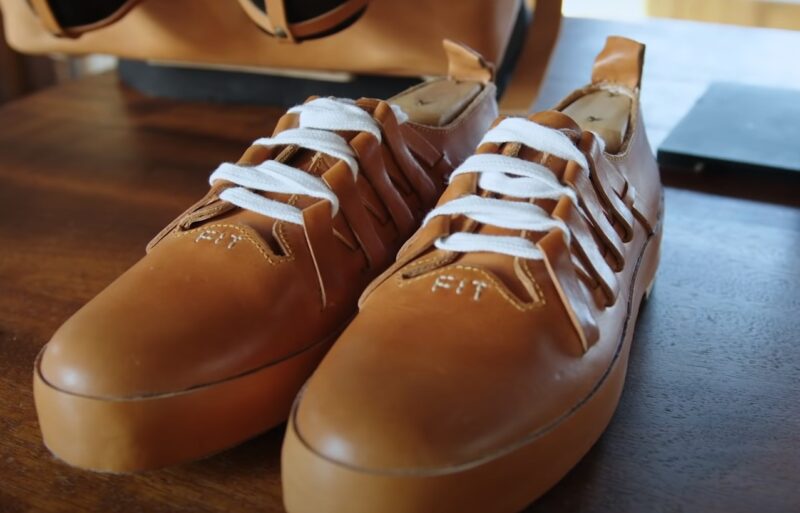
Nubuck leather is renowned for several key features:
- Softness and Texture: The buffing process makes it exceptionally soft, creating a tactile experience that is both luxurious and inviting. This softness doesn’t compromise the leather’s integrity, making it a preferred choice for products that require a delicate yet durable material. The texture of nubuck also adds a dimension of sophistication and depth, setting it apart from smoother leathers.
- Durability: Despite its softness, nubuck is quite durable. Its resilience stems from the fact that it is made from the top grain of the hide, which is the strongest part of the leather. This durability makes nubuck a practical choice for items that see regular use, such as furniture and footwear, as it can withstand wear and tear while maintaining its aesthetic qualities.
- Breathability: Being a natural material, nubuck offers good breathability, which is particularly beneficial for items in direct contact with the skin, like shoes and clothing. This breathability ensures comfort for the wearer, making nubuck an ideal choice for high-end fashion where comfort is as important as style.
- Unique Aging Process: Nubuck develops a patina over time, which is a testament to its natural origin and quality. This aging process enhances its aesthetic appeal, giving each nubuck item a distinctive look that evolves with use. However, this natural aging also means it requires regular maintenance to retain its beauty. It’s susceptible to stains and water damage, so proper care and occasional professional cleaning are essential to maintain its appearance over time.
Where Is It Used?
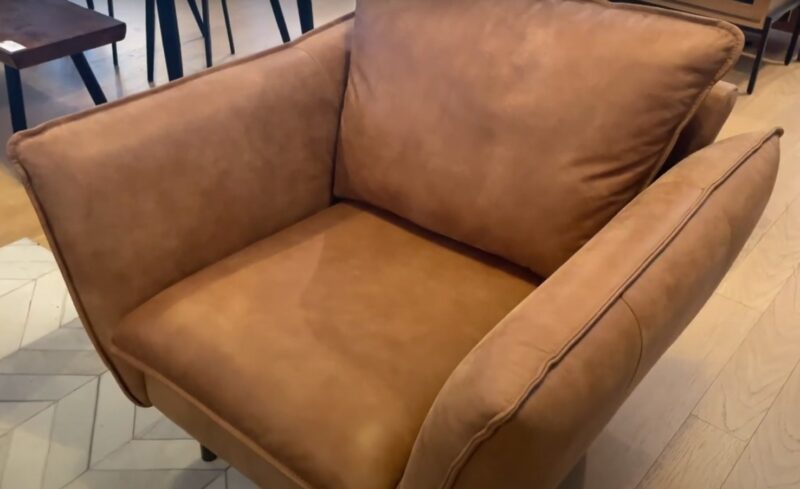
Footwear
Durability and comfort of this leather make it ideal for shoes. Nubuck leather shoes are especially popular for their ability to withstand regular wear while maintaining their aesthetic appeal.
The material adapts well to the foot, enhancing comfort for the wearer. Additionally, nubuck shoes are a favorite in both casual and formal settings, known for their versatility and style.
Furniture
Nubuck is often used in luxury furniture for its texture and elegance. The material adds a touch of sophistication to any piece, be it sofas, armchairs, or ottomans.
Nubuck furniture is particularly sought after in high-end interior design, where its unique texture and rich appearance can transform a space.
The material is also valued for its tactile quality, offering a soft, inviting feel that enhances the comfort of the furniture.
Fashion Accessories
Bags, gloves, and jackets made from nubuck are highly valued. The material’s resilience makes it ideal for everyday accessories that endure frequent use while maintaining their luxurious look.
Nubuck leather accessories are a symbol of elegance and quality in the fashion world, often associated with premium brands and designers.
These items, ranging from sleek wallets to stylish jackets, add a sophisticated touch to any ensemble.
Maintenance
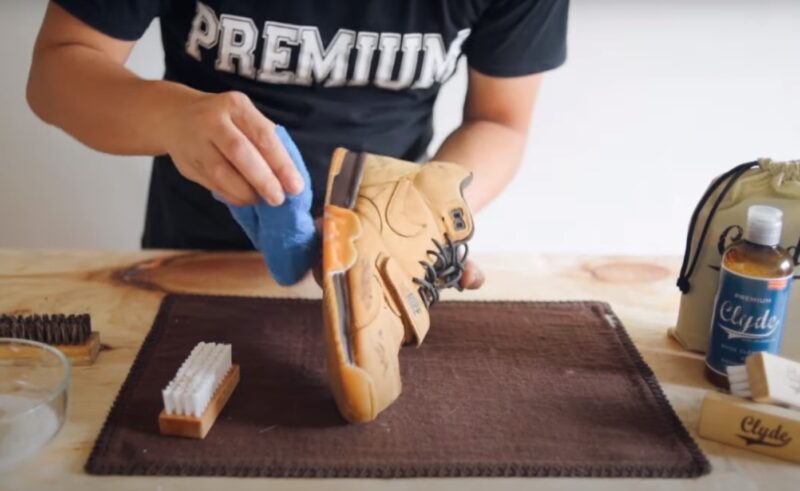
To maintain the appearance of this leather apply regular cleaning. Use a nubuck cloth or brush for regular cleaning. This gentle approach helps maintain the nap and texture of the leather without causing damage.
It’s important to clean nubuck regularly to prevent dirt accumulation, which can degrade the material over time. A nubuck-specific brush can also help in reviving the texture, keeping the leather looking fresh and new.
Stain Prevention
Apply a nubuck protector spray for stain prevention. This spray creates a protective barrier against spills and stains, prolonging the life and beauty of the nubuck item.
It’s a vital step in nubuck care, especially for items that are frequently used or exposed to potential spills. Regular application of the protector spray ensures that nubuck retains its pristine condition for a longer period.
Dealing with Spills
Blot spills immediately; avoid rubbing. Quick action is crucial in preventing the spill from penetrating deep into the leather. Rubbing can push the stain deeper and damage the nubuck’s delicate surface.
Instead, gently dab the area with a clean, dry cloth to absorb the spill. If the stain persists, it’s advisable to consult a professional leather cleaner.
Professional Care
For deep cleaning or repair, seek professional services. Professionals have the right tools and expertise to handle complex stains or repairs without damaging the delicate nubuck.
This is especially important for expensive or sentimental items. Regular professional maintenance can greatly extend the life and appearance of nubuck products.
Nubuck vs. Other Leathers
| Leather Type | Durability | Texture | Maintenance | Common Uses | Unique Qualities |
|---|---|---|---|---|---|
| Suede | Less Durable | Soft, Pliable | Challenging to Maintain | Fashion Items, Footwear | Softness, Aesthetic Appeal |
| Full-Grain Leather | More Robust | Lacks Nubuck’s Softness | Easier to Maintain | Heavy-Duty Products | Develops Patina, High Wear Resistance |
FAQs
Can nubuck leather be waterproofed?
Yes, it can be waterproofed to a certain extent. It is advisable to use a waterproofing spray specifically designed for nubuck leather.
Regular application of this spray can help protect the leather from moisture and water damage, but it’s important to note that this doesn’t make the leather completely waterproof, just more resistant to water.
Is nubuck leather suitable for people with allergies?
This leather is generally considered hypoallergenic due to its natural composition and the tanning process it undergoes.
However, individuals with specific allergies to leather dyes or treatments should consult with the manufacturer or seek professional advice before using these products.
How does sun exposure affect nubuck leather?
Prolonged exposure to direct sunlight can cause nubuck leather to fade and dry out. UV rays can break down the natural oils in the leather, leading to a loss of its supple texture.
It is recommended to keep these items away from direct sunlight to preserve their color and texture.
Can nubuck leather be dyed at home?
While it is technically possible to dye it at home, it is a risky process that can easily damage the leather if not done correctly. Professional dyeing is recommended as it ensures the use of appropriate dyes and techniques that preserve the leather’s quality.
Is nubuck leather vegan?
No, it is not vegan as it is made from animal hide. Individuals looking for vegan alternatives might consider materials like microfiber or other synthetic leathers that mimic the texture and appearance of nubuck without using animal products.
Summary
In conclusion, nubuck leather is a distinct and high-quality material known for its soft, velvety texture and durability. It’s made from the top grain of animal hides and is commonly used in a variety of products including footwear, furniture, and fashion accessories.
While nubuck leather requires specific care to maintain its appearance, its unique qualities make it a popular choice for those seeking a blend of luxury and practicality in leather goods.
